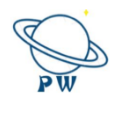
PW Consulting has recently published an in-depth research report on the Fischer-Tropsch Hard Waxes Market, offering a comprehensive analysis of prevailing trends and emerging dynamics in this highly specialized segment of the chemical industry. As the demand for high-performance waxes continues to evolve across various end-use sectors—including coatings, adhesives, cosmetics, packaging, and polymers—the Fischer-Tropsch Hard Waxes Market has come under heightened scrutiny. The report delves into the intricacies of production technologies, market drivers, regulatory environments, and competitive strategies shaping the landscape in 2025 and beyond.
One of the core sections of the report explores the technology fundamentals of Fischer-Tropsch synthesis itself. The Fischer-Tropsch process, a catalytic chemical reaction used primarily to produce synthetic hydrocarbons from syngas (a mixture of hydrogen and carbon monoxide), is explained in detail. By utilizing specific catalysts and carefully controlled operational conditions, the process is optimized to yield hard waxes characterized by high melting points, low oil content, and remarkable consistency. These properties make Fischer-Tropsch hard waxes distinct from natural or petroleum-based waxes, and the report illustrates how advancements in process control, catalyst innovation, and plant design are making production more efficient and environmentally friendly.
The PW Consulting report offers a qualitative and quantitative breakdown of market demand by industry. It evaluates how Fischer-Tropsch hard waxes are finding increasing use in applications that require enhanced durability, chemical resistance, and smooth surfaces. For instance, the report details consumer trends in packaging, where sustainability concerns have prompted a shift towards synthetic waxes that can be engineered for biodegradability and recyclability. Similarly, the report investigates the significant role these waxes play in cosmetics—where their low impurity levels and inert chemical properties support hypoallergenic and vegan product formulations with strong global appeal.
Another critical area in the research is the regulatory environment impacting Fischer-Tropsch hard waxes. The report lays out the global framework of safety standards, material certifications, and environmental restrictions that manufacturers must navigate. Insights are provided into the stringency of registration procedures, especially in the European Union and North America, and the growing importance of compliance with REACH and TSCA regulations. Experts interviewed in the report highlight the push towards eco-friendly sourcing and the adoption of renewable feedstocks, forecasting that compliance and certification will be key points of differentiation for market participants in coming years.
The competitive landscape is meticulously analyzed, with the report profiling both global industry leaders and emerging players in the production and supply of Fischer-Tropsch hard waxes. Through strategic case studies, the report illustrates how market participants are pursuing capacity expansions, vertical integration, and collaborative R&D projects to build resilience against supply chain disruptions. Special attention is paid to partnerships between technology providers and end-use manufacturers, which are fostering the development of tailored wax grades and novel applications. The experts quoted in the report note the increasing prevalence of joint ventures between chemical companies and energy firms, reflecting a trend toward diversification and risk sharing in the industry.
A notable section of the report concerns innovation in product development. The research identifies key technical parameters that determine the performance of hard waxes, such as melting range, hardness, viscosity, color, and penetration index. It details how manufacturers are experimenting with catalyst systems and feedstock blends to fine-tune these characteristics, responding to increasingly sophisticated specifications from downstream users. For example, there is a growing demand for waxes that can improve abrasion resistance in floor polishes and hot-melt adhesives, or reduce friction in extrusion processes for plastics and rubber. Through a series of expert interviews, the report conveys how R&D efforts have accelerated in response to new applications in niche fields like 3D printing and medical device coatings.
Regional market dynamics receive substantial attention in the report, with distinct patterns of adoption and investment across North America, Europe, Asia-Pacific, Latin America, and the Middle East & Africa. The researchers present an analysis of the factors contributing to regional demand—such as the move toward circular economy models in Europe, infrastructure spending in Asia-Pacific, and the recovery of manufacturing activity in North America. The report highlights regional differences not only in market maturity but also in technological sophistication, with some geographies prioritizing integrated process plants that co-produce a range of synthetic hydrocarbons, including hard waxes, soft waxes, and specialty liquids.
On the supply side, the report examines the volatility in raw material markets—particularly natural gas, coal, and biomass—which represent the primary feedstocks for Fischer-Tropsch synthesis. It discusses the impact of price swings, policy shifts, and environmental regulations on feedstock availability, and how these factors are influencing supply chain management strategies. Supply chain resilience is illuminated through case studies of recent disruptions, as well as the contingency planning undertaken by leading producers to mitigate risk and ensure business continuity.
The impact of macroeconomic trends on the Fischer-Tropsch hard waxes sector is also covered. The report discusses shifts in global trade policy, foreign direct investment trends, and energy transition scenarios that are affecting investment decisions among market participants. Analysts from PW Consulting outline how uncertainty in energy markets—particularly the ongoing transition toward renewables and the decarbonization of chemical processes—is reshaping the strategic priorities of producers. The report includes scenario analyses that explore the long-term implications of energy price volatility and geopolitical developments on the viability of Fischer-Tropsch hard waxes production.
Insightful forecasts about demand drivers are a hallmark of the report. It discusses the expanding range of industries adopting Fischer-Tropsch hard waxes, fueled by a confluence of regulatory changes, shifting consumer preferences, and technological innovation. In packaging and coatings, for instance, the drive toward lightweighting and recyclability is pushing manufacturers to seek waxes with enhanced mechanical properties. In textiles and leather processing, there is a growing appetite for products that offer superior processability and low environmental impact. The report features expert commentary on how the evolving needs of these industries are expected to shape demand profiles for Fischer-Tropsch hard waxes through 2025 and beyond.
A detailed value chain analysis is included within the report, mapping out the key stages from syngas production through Fischer-Tropsch conversion to downstream blending, formulation, and application. The research highlights the role of intermediary distributors, value-adding resellers, and technical service providers in ensuring the quality, consistency, and adaptability of hard wax products. The findings underscore the importance of traceability and documentation throughout the supply chain, as end-users increasingly demand assurance on both provenance and performance characteristics.
The report devotes considerable attention to financial performance indicators and investment analysis. Factors such as operating costs, capital expenditures, and return-on-investment metrics are examined in the context of recent and planned capacity expansions. The report illustrates how fluctuating input costs and evolving environmental levies are affecting profitability, and it provides benchmarking data for key industry players. A section dedicated to merger and acquisition trends outlines recent deals and describes how these transactions are facilitating technology transfer and market consolidation in the Fischer-Tropsch hard waxes space.
In terms of customer behavior and buying patterns, the report draws on survey and interview data to reveal priorities among industrial users, formulators, and brand owners. Decision criteria such as cost-performance ratio, regulatory compliance, and green credentials are found to be increasingly important. The researchers analyze procurement models, from long-term contracts and spot buying to collaborative development agreements, identifying best practices that drive efficiency and customization. Stakeholder experiences with technical support, product trials, and after-sales service are reviewed in-depth, providing a realistic picture of what differentiates the leading market suppliers.
Given the rapid pace of technological and environmental change, the report dedicates a section to future trends and innovation horizons in Fischer-Tropsch hard waxes. It explores upcoming breakthroughs in catalyst design, feedstock diversification, and process optimization, as well as their implications for sustainability and market growth. The authors highlight ongoing projects involving digitalization, automation, and process monitoring, suggesting that productivity gains and cost reductions could drive new entrants and alter the competitive equilibrium.
Expert commentaries punctuate the report, adding qualitative depth and industry perspective to the quantitative analysis. Renowned chemists, process engineers, supply chain specialists, and corporate strategists weigh in on what distinguishes Fischer-Tropsch hard waxes from competing materials and outline the conditions necessary for continued innovation. These insights are synthesized into actionable intelligence for stakeholders ranging from investors and technical managers to regulatory agencies and policymakers.
The report is methodically organized to cater to a broad audience, from raw material suppliers and wax producers to industrial formulators and end-user brands. It offers actionable recommendations for seizing emerging opportunities, overcoming challenges, and building competitive advantage as the Fischer-Tropsch Hard Waxes Market continues to mature and diversify. In an era marked by heightened attention to sustainability, operational efficiency, and material innovation, PW Consulting’s research stands out as an essential resource for understanding the forces at work in this dynamic market segment.
https://pmarketresearch.com/chemi/fischer-tropsch-hard-waxes-market
Disclaimer: The iCrowdNewswire provides distribution services for Research Marketing reports, however, it does not assume any responsibility for the content (facts, opinions, photos, or any other part of it) of the reports. All responsibility of the content is with the publisher of the report.
Contact Information:
Lacy Lee Senior Marketing Manager sales@pmarketresearch.com 00852-95632430 www.pmarketresearch.com
Tags:
CE, Go Media, Go Media2, iCN Internal Distribution, Reportedtimes, Research Newswire, English

